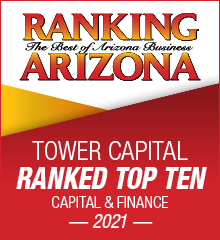IREM CCIM Annual Economic Forecast 2022: Part 2 National Outlook
The outlook for Arizona, especially the Greater Phoenix MSA, is extremely optimistic rolling into 2022. Continued population growth and positive demographic trends will keep demand high for housing and other assets classes.
The Greater Phoenix Economic Council (GPEC) and other industry organizations have been successful in luring companies to Arizona making the state a major center for advanced manufacturing in the semiconductor and electric vehicles industries, which include companies such as Intel, Taiwan Semiconductors, Lucid Motors, and Nikola. In addition to high tech manufacturing, the industrial sector is also benefiting from growing ecommerce, onshoring, and greater need for food and beverage capacity, as noted by the recent announcement of both Red Bull and White Claw facilities.
Strong job growth is a major component of healthy economy and Arizona has recouped 100% of the jobs lost during the COVID pandemic. As a state Arizona ranks 3rd in the nation for job growth when comparing 2019 to 2021, while the Phoenix MSA is second only to Austin when comparing cities. In fact, Arizona is currently capturing about 1/10th of all movers relocating to different states withing the country and is growing approximately four times the national average. The majority of people moving to Arizona are in their late 20’s and early 30’s, which historically is the peak age range for first time home buyers. These demographics are likely to keep housing demand high when there is already an extreme lack of supply.
The Greater Phoenix MSA has one of the most significant imbalances of supply and demand in the nation, which is under supplied in existing homes, new homes, and apartments. The estimated shortage of single-family homes is 25,000 and 15,000 for multifamily. This is on top of the additional units needed to keep up with population growth. The lack of inventory has sent home prices skyrocketing, with affordability becoming a major concern, especially with interest rates expected to rise. Yet the average price for a home in Phoenix is still well below that of cities like Los Angeles, Seattle, and Chicago which represent the top three markets from which people are relocating from.
What happens if the affordability situation continues to deteriorate? There will be fewer buyers that can afford the median home price, fewer owners and more renters, more people doubling up or living with their parents, smaller homes, more density, less work force housing for service workers like teachers, policemen, firemen, nurses, etc., and more homelessness. These scenarios create a worsening economic development picture over time as the ability to draw workers diminishes. When the balance of supply and demand does normalize, prices are expected to be at a much higher level than today.
According to Elliot Pollack, in order to meet the demand of approximately 80,000 – 90,000 people moving to Arizona per year, much more housing inventory must be built. It is estimated that to get supply and demand back in balance over the next five years we will need a total of 26,000-28,000 single family for sale units per year and a total of 13,000-16,000 rental units per year.
Despite a number of uncertainties facing the country, such as supply chain disfunction, inflation, possible rise of interest rates, lack of labor, and the risk of housing affordability, Greater Phoenix will likely continue to be stronger than the US as a whole for the near to medium term given the population and job growth it should continue to benefit from.




